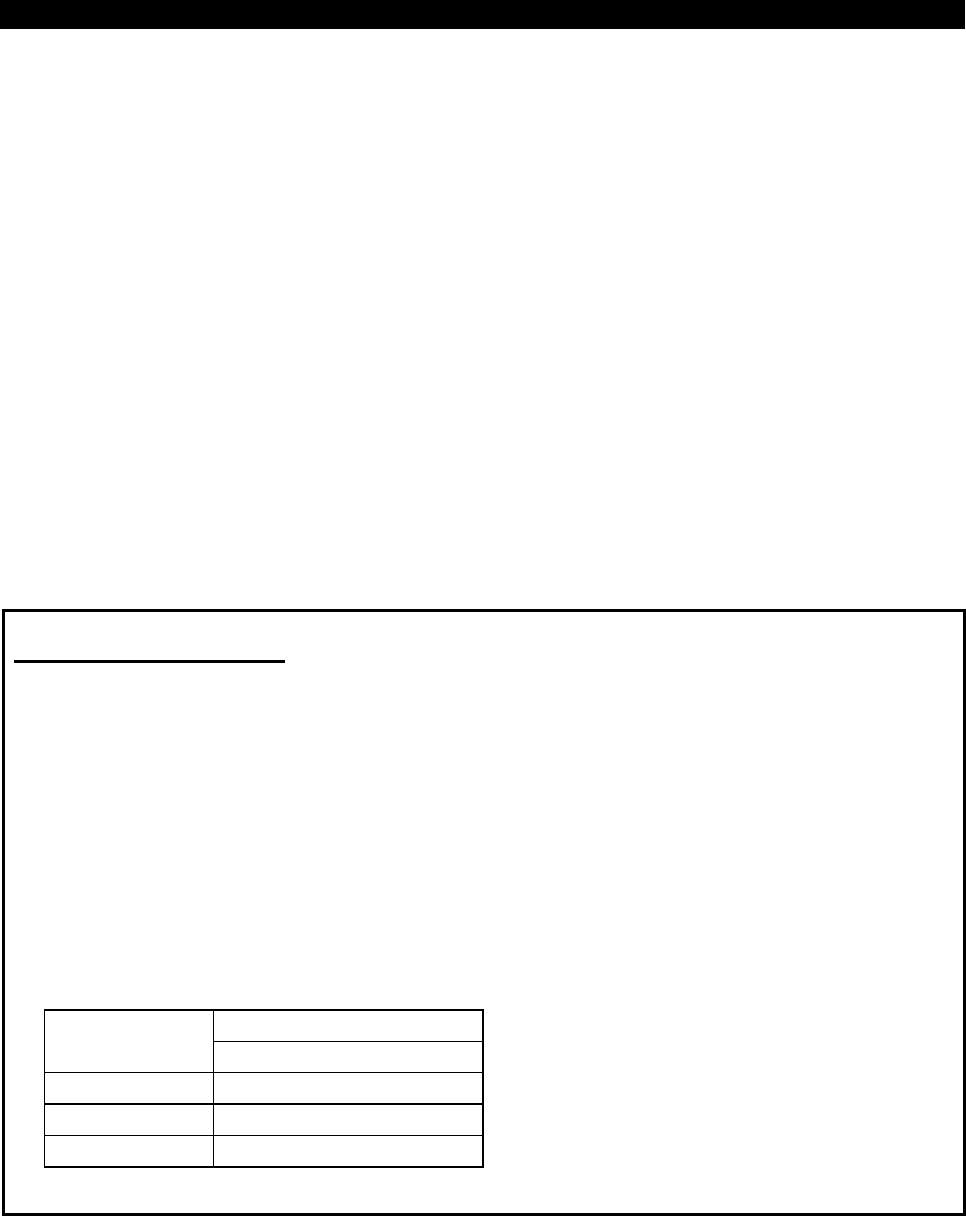
INSTALLATION AND WIRING
15
6) Connect only the recommended optional brake resistor between the terminals P-PR
(+ - PR). Keep terminals P-PR (+ - PR) of 0.1K or 0.2K open.
These terminals must not be shorted.
0.1K and 0.2K do not accept the brake resistor. Keep terminals P-PR (+ - PR) open.
Also, never short these terminals.
7) Electromagnetic wave interference
The input/output (main circuit) of the inverter includes harmonic components, which
may interfere with the communication devices (such as AM radios) used near the
inverter. In this case, install the FR-BIF optional radio noise filter (for use in the input
side only) or FR-BSF01 or FR-BLF line noise filter to minimize interference.
8) Do not install a power capacitor, surge suppressor or radio noise filter (FR-BIF
option) in the output side of the inverter.
This will cause the inverter to trip or the capacitor and surge suppressor to be
damaged. If any of the above devices are installed, immediately remove them.
9) When rewiring after operation, make sure that the POWER lamp has gone off, and
when more than 10 minutes has elapsed after power-off, check with a meter etc.
that the voltage is zero. After that, start rewiring work. For some time after power-off,
there is a dangerous voltage in the capacitor.
Notes on Grounding
"
Leakage currents flow in the inverter. To prevent an electric shock, the inverter
and motor must be grounded (200V class: class C grounding, grounding
resistance 100
Ω
maximum).
"
Use the dedicated ground terminal to ground the inverter. (Do not use the screw
in the case, chassis, etc.)
"
The ground cable should be as thick as possible. Its gauge should be equal to or
larger than those indicted in the following table, and its length should be as short
as possible. The grounding point should be as near as possible to the inverter to
minimize the ground cable length.
"
Ground the motor on the inverter side using one wire of the 4-core cable.
(Unit: mm
2
)
Ground Cable Gauge
200V class
2.2kW or less 2
3.7kW 3.5
5.5kW, 7.5kW 5.5


















